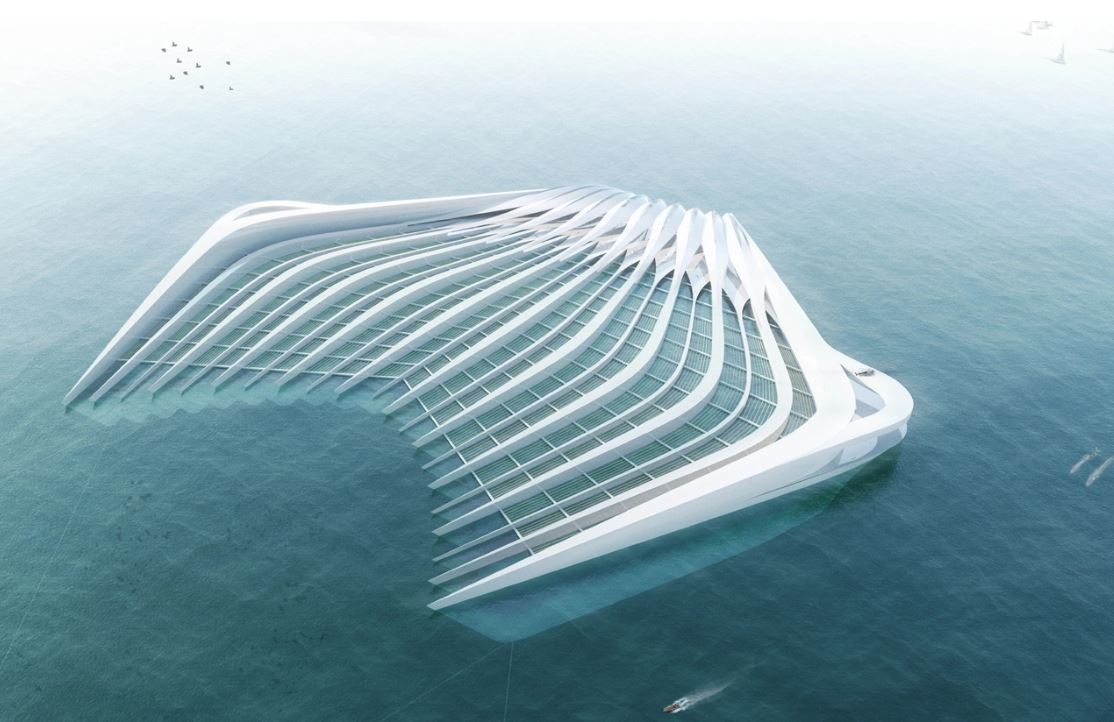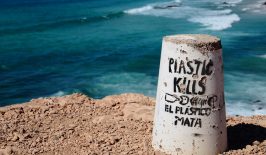What started out as one German architecture student’s final project is set to make waves when it comes to tackling one of our most pressing environmental issues – ocean plastic.
By the year 2050 there will be more plastic in the ocean than fish – at least according to the prediction of the Ellen Macarthur Foundation. The good news though: more and more people are realising that the mountains of plastic waste in the world’s oceans is a huge problem – and that we need solutions. One of the most well-known ideas of how to tackle the plastic pollution problem is the Ocean Cleanup Project, developed by the young Dutch ecopreneur Boyan Slat. His concept consists of an oversized floating tube with a net attached underneath, designed to catch and collect up plastic parts that are floating on the water’s surface. After testing initial prototypes in San Francisco Bay, the Ocean Cleanup is due to soon head towards the Great Pacific Garbage Patch – the largest garbage dump in the Pacific – in the middle of 2018. Now Slat could soon be receiving support from a German colleague whose idea to tackle plastic pollution may even have a slightly more innovative edge.
Plastic pollution – from problem to potential
What began as Marcella Hansch’s final project for her architecture degree could soon be a major force in the fight against plastic pollution in our oceans. Called “Pacific Garbage Screening” (PSG), the floating platform is designed not only to filter plastic pieces and particles from the water, but also to use the plastic collected as a resource for energy production and for synthesis into bioplastic. Part of the floating structure is also designed to house research teams.
How does it work?
PSG looks a bit like a curved comb, a humpback whale or a futuristic spaceship. Water flows through the teeth of the comb (stretching 400 metres wide and go 35 metres deep) where the special design slows and calms the flow of water. Since plastic is actually lighter than water and is only dragged under water by the currents, smaller plastic parts within the system float upwards and can be skimmed off. The whole thing works without nets, meaning that no fish or other sea creatures are likely to be harmed.
 © Pacific Garbage Screening Between the different sections of the structure, the movement of the water slows and plastic rises to the surface.
© Pacific Garbage Screening Between the different sections of the structure, the movement of the water slows and plastic rises to the surface.From ocean plastic to algae plastic
Hansch’s team has also come up with an idea of how to use the plastic they collect in a meaningful way. With the aid of so-called plasma gasification, the ocean plastic is set to be transformed into hydrogen and carbon dioxide on board the collecting vessel. The hydrogen will then serve as fuel for energy-efficient and environmentally-friendly fuel cells and thus supply the PSG with energy. The CO2 is intended to serve as a nutrient for the algae grown on the surface of the structure, which could in a further step be used to produced algae-based plastic – an (often) biodegradable plastic that’s being used to create all kinds of things, from eco-friendly flip-flops to sustainable filament for 3D printing.
The PSG team has already overcome the first hurdle in the realization of their project: in July, a crowdfunding campaign exceeded its financing target and the 230,000 EUR raised can now be used to hire staff and let the concept become reality.
With PSG working alongside other plastic tackling projects such as the giant litter-picking ship manatee and the SeaBin which sucks marine litter out of ports and harbours, hopefully the fish to plastic ratio in our oceans seas will be 1:0 by 2050.
This article is a translation by Marisa Pettit of the original article which first appeared on RESET’s German-language site.






